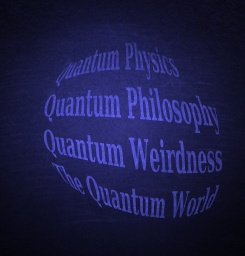Whereas we humans have a life span of around eighty years, give or take a few, muons survive intact for a much briefer time—an average of about two microseconds (two millionths of a second). However, some die very quickly, in under one microsecond, and some live for as long as six microseconds. Very few are found at the end of, say, eight microseconds.
In one experiment, physicists took scintillation counters to the top of a mountain 6300 feet above sea level. They counted the number of muons at that altitude and found that somewhere around 568 newborns passed into their counters each hour. They then followed the muons through their short lives, letting them travel down a short vertical tube where they came to rest and eventually decayed near a second scintillation counter. As expected, only 300 resting muons lived past two microseconds. Around 30 of them made it to the ripe old age of 6.3 microseconds. Because the scientists knew how far these particles traveled along the tube's length, they could determine how fast they flew before they rested and decayed, and they found that they moved at very near lightspeed.
Next, they took their counters down to the seaside. What did they anticipate there? Well, if a muon lived long enough and moved at near lightspeed, it could travel the 6300 feet down to sea level in about six microseconds. But given that most of them don't live that long, the scientists expected to find only a handful surviving— maybe 30 oldsters, say, who could make the journey.
Surprisingly, however, many more than 30 survived. In fact, around 412 made the trip without mishap.
How could that many live that long? Travel may add a certain pizzazz to ones life, but I have never heard of it lengthening one's life span. That is, not unless you take Einstein's relativity theory into account. The theory says that time does not function the same way for a moving object as it does for one standing still. Moving objects experience a slowing down of time, so that while the rest of the world passes through a given time period, the moving object passes a shorter time period. In this respect, we can estimate how long the 412 muons that reached sea level "thought" they had lived. It turns out that that they experienced a time period of only around 0.7 microseconds. Compare that with 6.3 microseconds—the time it takes to make the trip down the mountain at near lightspeed—and you see that this yields a factor of 9, exactly what would be calculated by Einstein's theory. In other words, the muons that survived the trip lived more than nine times their expected life span.
What is going on here? For the muons, nothing really extraordinary happened. They just lived their short, seven-tenths-of-a-microsecond life spans on their way down the mountain. But it just so happens that we on the ground passed through 6.3 microseconds of our life spans at the same time that the muons passed through only 0.7 microseconds. In what sense did these two periods take the same amount of time? In trying to think about such things, our very figures of speech become perplexing. Our language is so based on thinking in terms of absolute time that the mere idea of relative times hardly makes any sense. As Alice says, "It's dreadfully confusing!"
Relative distances, on the other hand, make sense. I can travel from my living room to my bedroom—some dozens of feet—by walking off a mile if I go downstairs, out the door, and around the block a few times before I walk into the bedroom. Or I can walk to the kitchen first and then to the bedroom. Each measure of distance is different. The distance is relative to the route I take. I always start in the living room and end up in the bedroom, but the distance I travel to get there can be, and is normally, different (since I rarely walk in a straight, shortest-distance line) each time I make the journey.
We assume that, in contrast to moving through space, moving from one point to another in time is possible only along a single "line" between those points. What if, however, time were not linear but more like distance? Then relative times would be understandable. We would say that those who went from one event to another would find their times as different from each other as if they had walked different distances between two points in space.
The Yoga of Time Travel, Fred Alan Wolf




No comments:
Post a Comment